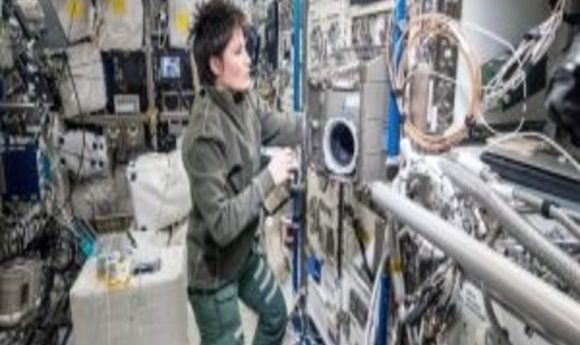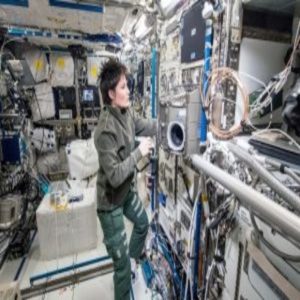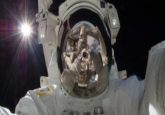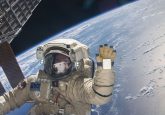Mammalian macrophages get the hang of microgravity

In real time, Earth-bound scientists witnessed mammalian cells adapting to microgravity in experiments conducted on the ISS. How long did it take the cells to get accustomed to weightlessness?

ESA astronaut Samantha Cristoforetti conducts the experiment on the ISS’s BIOLAB of the COLUMBUS Module.
Credit: NASA
Throughout the history of Earth, gravity has remained constant and exerted a significant impact on the development of life. Lately, though, many researchers have noticed that everything from microbes to humans are capable of adapting to microgravity environments over a period of a few days, sometimes a few hours. Scientists find it rather peculiar that a variety of organisms can adapt so easily to microgravity despite having never experienced it on Earth.
In a new study published in the journal Scientific Reports, an international group of researchers headed by Cora Thiel and Oliver Ullrich at the University of Zurich (UZH) explored the rate at which rat macrophage cells adapt to weightless environments in the International Space Station’s (ISS) BioLab. To their surprise, the researchers witnessed complete cell adaptation to microgravity in less than a minute.
“We found a surprising ultra-rapid adaptation to gravity from one mammalian cell type that hints to the possibility [of ultra-fast adaption responses] in other cell types,” said Thiel.
The design and development of the experiment took more than 10 years of proposals, testing, and preparation. On April 14, 2015, the experiment – cells, hardware, and all – was finally launched on the Space X Dragon Spacecraft from Cape Canaveral, Florida. For the next month, astronaut Samantha Cristoforetti of the European Space Agency (ESA) conducted the experiment, while simultaneously downlinking the data to the Earth-bound researchers for real-time data analysis.
To understand how the macrophages responded to changes in gravity, the researchers paired BioLab centrifuges that could generate artificial gravity with oxidative burst reactions (OBR) from the macrophages themselves. OBR is an ancient part of the macrophage response that is critical for fighting off bacteria. This pairing ensures that all factors were constant, except for gravity.
When Cristoforetti began the “step-wise” gravitational changes from 0 g to 1 g, and 1 g back to 0 g, the researchers noted the cells’ reactions to the subtle changes. At first, OBR dropped at zero gravity, but the cells recovered within 42 seconds. Thiel said this kind of rapid adaptation is remarkable, but how it works remains unknown.
In future ISS BioLab experiments, the team plans to clarify whether gravity influences epigenetic gene regulation by searching for a pathway linking gravitational force and cell function. Another (perhaps far-off) experiment includes live imaging of dynamic, molecular reactions in real time, depending on new technologies to transmit large quantities of information effectively.
Right now, however, there are a lot of unknowns as to how and why life can adapt to microgravity. But for Thiel, this work strengthens the case for manned space exploration: “The most rewarding aspect is that we are entering a completely new world, the world of a new gravity environment different from Earth. Research in microgravity is to explore and to discover new worlds and to go far beyond known boundaries.”


